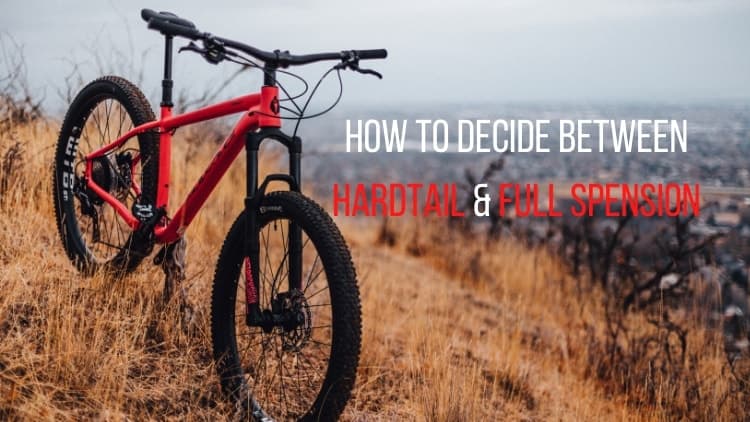Buying your first Mountain Bike is one of the most exciting moments you will have when you first start Mountain Biking.
With all the latest technology in the sport, there is a Bike to suit every rider and every riding style.
But with all the choices, it can be hard to make a decision.
Even coming down to the first decision you must make, whether to buy a Hardtail or a Full Suspension Mountain Bike.
And with the plethora of features offered on each platform, the decision between the two has become harder than ever.
To help you decide what Bike is right for you, we created a guide with the comparison of a Hardtail vs a Full Suspension, with some tips to help you decide which one is best for you.
When it comes to the shootout between a Hardtail and a Full Suspension, it really comes down to Budget, Riding Style and rider preference. But there may be a few more variables that will lead you one way or the other. Keep reading to help you decide which Bike is right for you.

Budget
Starting off, one of the most important deciding factors when it comes to buying your first Mountain Bike is your Budget.
In fact, your Budget will play the largest role in helping you decide which Bike is for you.
Naturally, the more money you are able to spend, the better the Bike you are able to buy.
For most beginners, it’s best to stick to a smaller budget when you first start out.
This is where things differ greatly.
In general, Full Suspension Mountain Bikes are more expensive than Hardtails.
That’s not saying Hardtails are in any way inferior, it’s just that the Full Suspensions are a lot more complex.
The extra Frame technology along with the additional suspension makes for a relatively expensive machine.
In most cases, you are able to buy a higher-quality Hardtail for the money you would spend on an entry-level Full Suspension.
But that is not always the case, and there may even be instances where buying a Full Suspension would make more financial sense based on some of the factors below.

Riding Style
Your riding preference will be the next determining factor when it comes to Hardtails vs Full Suspensions.
There are certain traits that each style of Bike has, making the riding experience slightly different with each.
Hardtails are known for their rigid and responsive feel, while Full Suspensions are more forgiving and comfortable.
Hardtails are also the lightest Mountain Bike style, as Full Suspensions have the additional weight of the rear suspension.
With the wide range of Mountain Bike styles, each bike has dominated its own sectors.
Hardtails are used in sports like Cross Country, Dirt Jumping and Trials.
These are sports that favor the lighter weights and responsiveness that come with Hardtails.
Full Suspensions are used in sports like Downhill, Enduro, and Trail.
These are sports where the Bike needs to be able to handle extreme situations like huge jumps or rocky descents.
Those who ride Hardtails will also notice the difference when riding uphill.
The rigidness of a Hardtail helps you apply all your energy toward climbing the hill, whereas, some of your pedaling force will be lost in the flex of the rear suspension on a full-suspension bike.
Likewise, a Full Suspension will help dampen and “tame” a trail that would otherwise be too rocky for a Hardtail.

Riders Preference
Rider preference will be one of the last crucial factors to come into play when you’re deciding between a Hardtail and a Full Suspension.
This may be the one to trump them all depending on your budget.
Regardless of what platform you choose, each style of Bike can easily suit your needs.
At the end of the day, you want to make sure you’re riding something you’re proud of.
For this reason, always keep your own preferences in mind.

Terrain
In the world of Mountain Biking, what you’re riding often comes down to where you’re riding it.
In fact, depending on the terrain you plan on riding, you may be better suited for one Bike over the other.
Just like you wouldn’t take a Road Bike on a Mountain Bike trail, choosing the right Bike is about the places you will actually be riding.
Being different in geometry and attributes, Hardtails and Full Suspensions are best suited for different Terrains.
Full Suspensions can really take a beating and are perfect for those rough and rocky rides. Therefore, if you want to ride the gnarliest of terrain without sacrificing comfort, a Full Suspension is for you.
Plus, a Full Suspension will offer the most traction and efficiency if you plan on bouncing all over the trails.
On the flip side, Hardtails are precise and fast when it comes to getting the most out of your Mountain Bike. If you’re riding smoother trails with more hills and longer distances, you’re going to appreciate the lower weight and efficiency of a Hardtail.
But don’t let this deter you from making a decision either way.
The latest Mountain Bikes are being manufactured to lessen this gap between full suspensions and Hardtails, creating versatile machines capable of just about any terrain.
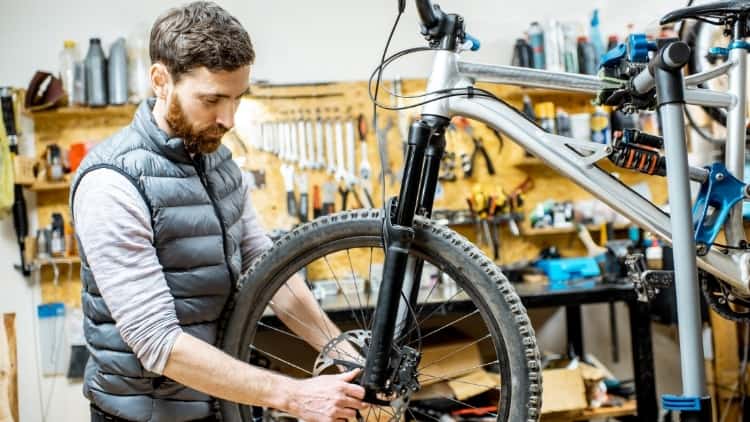
Maintenance
Unfortunately, the expense of Mountain Biking doesn’t stop after your initial investment in a Bike.
Just like any complicated machine, your Mountain Bike will require regular maintenance to ride like how it is supposed to.
This is where Hardtails and Full Suspensions can differ greatly.
With the additional suspension and the frame geometry needed to support it, Full Suspensions will naturally require more maintenance than a Hardtail.
And the Maintenance required for a Full Suspension is often more specialized.
Along with this, the Maintenance costs associated with a Full Suspension are more than they would be for a Hardtail Mountain Bike.
That rear shock can be really complicated and even more expensive technology than you would think.
When it comes to maintaining either Bike, make sure you keep your budget and Bike Mechanic skills in mind.
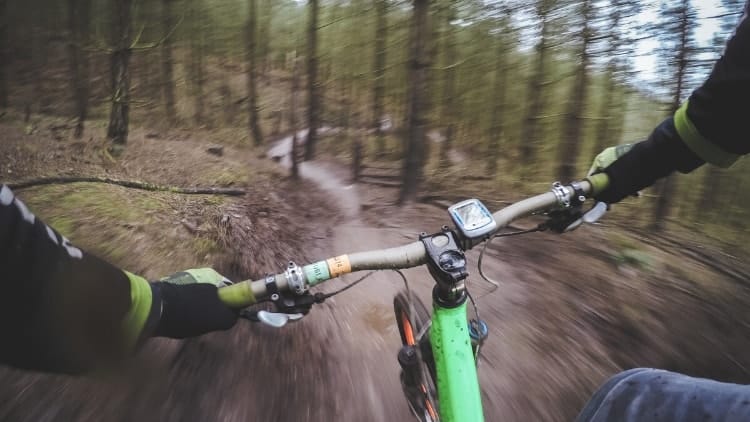
Fun
This next one is a bit subjective depending on who you ask, myself included, considering I am such a diehard fan of Hardtails.
Regardless of what got you started in Mountain Biking, we all keep riding for one reason – Mountain Biking is an absolute blast.
Even when your legs are burning and you’re scared out of your mind, riding a Mountain Bike is loads of fun.
And to get the most out of your experience, you want to be on the Bike that’s going to allow you the most FUN.
Arguably, Full Suspension Mountain Bikes are the most fun when it comes to Hardtails vs Full Suspensions.
And before my fellow Hardtail fans get too salty, let me mention a few things.
Full Suspensions are the most versatile Mountain Bike when it comes to the sport, with some Full Suspensions even rivaling Hardtails in sports like XC.
You will also feel more confident hitting big jumps and drops on a Full Suspension, as that is what they are meant for.
Lastly, having a Full Suspension opens you up to ride on just about any Mountain Bike trail the world has to offer.
Barring the most extreme of DH trails, you can take your Full Suspension just about anywhere.
On the flip side, Hardtails provide a more natural and in-tune feeling to Mountain Biking – bringing back the nostalgic introductions to the sport.
There is nothing like flying through your local trail on a Hardtail, hitting every rock and root, and pumping every dip and drop.
And trust me, riding uphill on a Hardtail is way more fun than riding on a Full Suspension.
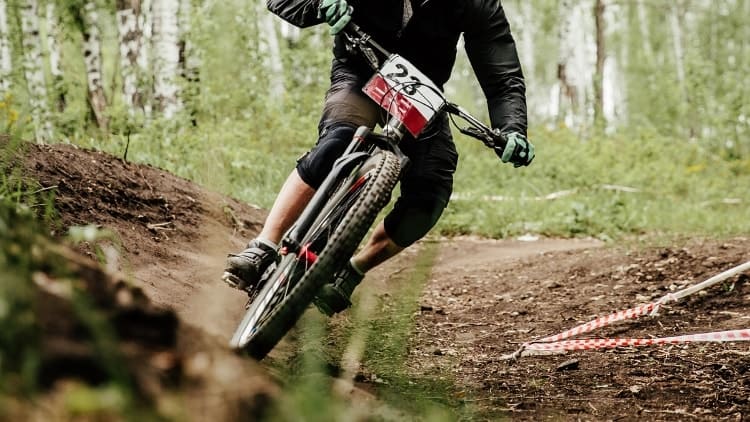
Handling
Depending on what and how hard you’re riding, Handling may play a big role in what bike you find is right for you.
Taking a few of the points above, you may want to take Handling into effect when making your decision.
In general, Hardtails are lighter and more manageable, meaning easier and better handling overall.
At the same time, Full Suspensions may provide more benefits in certain situations.
At high speeds and on rough terrain, a Full Suspension is going to give you the traction and control you need to properly and safely handle your Bike.
If you’re a beginner, a Hardtail may provide a better introduction to the sport of Mountain Biking.
Hardtails are more manageable and will most likely better suit the trails you’re riding.
For more advanced riders, a Full Suspension may provide the best experience on the challenging trails you’re hoping to accomplish.
Regardless, make sure you keep your safety and experience in mind.
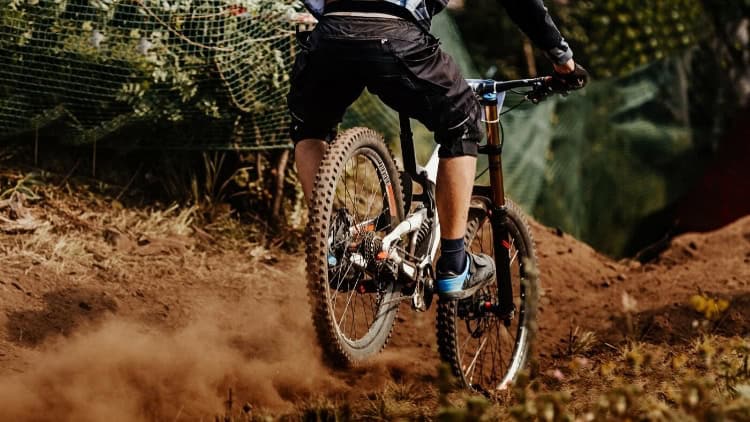
Speed
As mentioned briefly a little earlier in this article, Speed is going to be more important to some than others.
But just like Handling, this one can change in certain circumstances.
If you’re looking for the fastest Bike, there are a few things you should keep in mind other than your current skill level.
Being lightweight and more manageable, Hardtails are generally the fastest and most nimble Mountain Bike.
Without the added Suspension, you can really lift and maneuver the Bike up and around obstacles, maintaining as much momentum as possible.
And when it comes to pumping for speed, there is nothing more efficient than your legs pushing on a rigid Mountain Bike Frame.
Where Hardtails really shines, is when it comes to climbing. The efficiency if pedaling, frame geometry, and momentum really come together to create climbing machines.
But there is more to Mountain Bike trails than climbs. And what happens on those crazy descents?
This is where Full Suspensions take the lead; when it comes to conserving speed on fast and rocky descents.
Having a Bike that can handle all the bounce and rattle, Full Suspensions keep you less on the brakes and more on the move.
The rear suspension on an FS helps absorb shocks that would otherwise interrupt your forward motion.
This makes Full Suspensions way faster on descents like those in DH races.

Comfort
Surprisingly, Comfort can play a major role in your decision to buy one Bike over another.
Every beginner rider will experience the inevitable “Saddle Soreness”, however, you can still experience discomfort long after you’ve adjusted.
This is due to the fact that Mountain Biking can be taxing on the lower body.
Constant pedaling and bracing as you climb, jump, and traverse obstacles, your bottom half really does work hard to make the ride as comfortable as possible.
Unfortunately, Hardtails only have suspension on the front fork, and the rigid rear frame doesn’t provide much in the way of support when it comes to softening impacts.
This is a major benefit to Full Suspensions, as they provide the most comfortable ride overall when it comes to Mountain Biking.
The rear suspension on an FS acts as a cushion and shock absorber on rough trails, reducing the impact on your body and helping you ride for longer without issue.
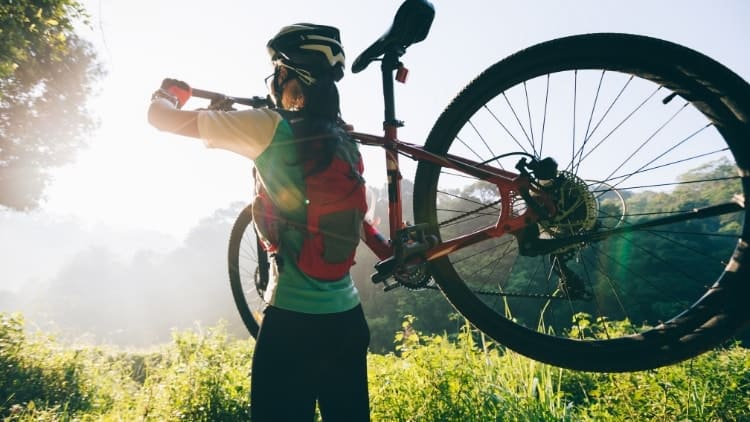
Weight
Often coming in at marginal differences, this last one is a little subjective as well.
Weight can be a deciding factor in the shootout between Hardtails and Full Suspensions.
For a better breakdown, check out this article on the weight of Mountain Bikes.
Again, this may not be a big deal to you yet, as the differences aren’t too drastic between the two.
This really comes down to those looking to shed as much weight as possible to maintain speed over long rides.
The Hardtail version of a Mountain Bike will always be lighter than its Full Suspension alternative.
Suspensions are a lot heavier than you think, so FS Bikes have to compensate in other ways.
But unless you’re having trouble lifting or maneuvering your Bike, don’t let weight deter you from choosing either Bike.

Efficiency
Taking it a bit further than the point on weight, some people are interested in getting the most efficient Bike possible.
And this is a good reason.
For those who are interested in racing or are looking to improve their lap times on a trail, getting the most efficient Bike is a real factor when it comes to buying your MTB.
Again, I urge that you take a few factors into consideration before making your decision.
Make sure you consider the style of riding you will be doing, along with the attribute for each style of Bike.
For speed and efficiency on climbs and long-distance rides, a Hardtail is often the best choice.
Just like before, the FS makes up for what the Hardtail lacks.
If you’re looking for the most effective Bike on DH-style descents and drops, a Full Suspension Mountain Bike is the best option.
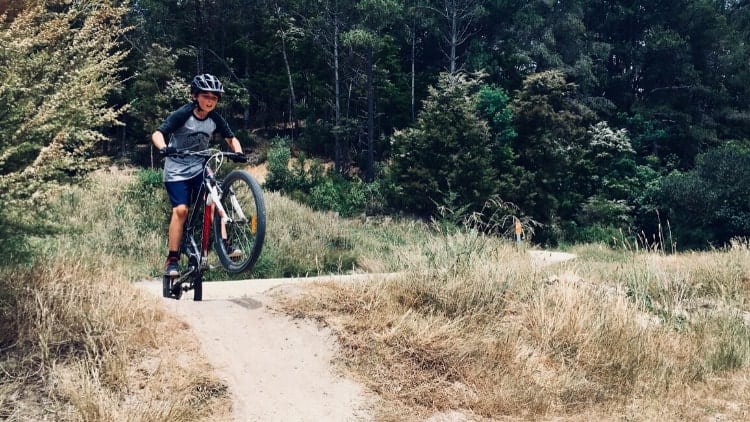
Skill Development
Finishing this list off, this last point is for the true lovers of the sport.
If you really enjoy riding, you naturally want to work on improving your skills on the Bike.
So what Bike is best suited to help a beginner hone their skills?
This is where I am a little biased.
I personally see Hardtails as the best Bike to learn on, as they teach you the importance of weight distribution and Bike Position.
Again, this can be the opposite depending on riding style.
But for the average rider, don’t overlook the tried and true Hardtail.
Conclusion
In conclusion, only you can decide what Bike is best for you, whether it be a Hardtail or Full Suspension.
Let this guide be an inspiration for your decision and feel free to make your own criteria to help you on your way.
Good luck with your decision and safe riding!

